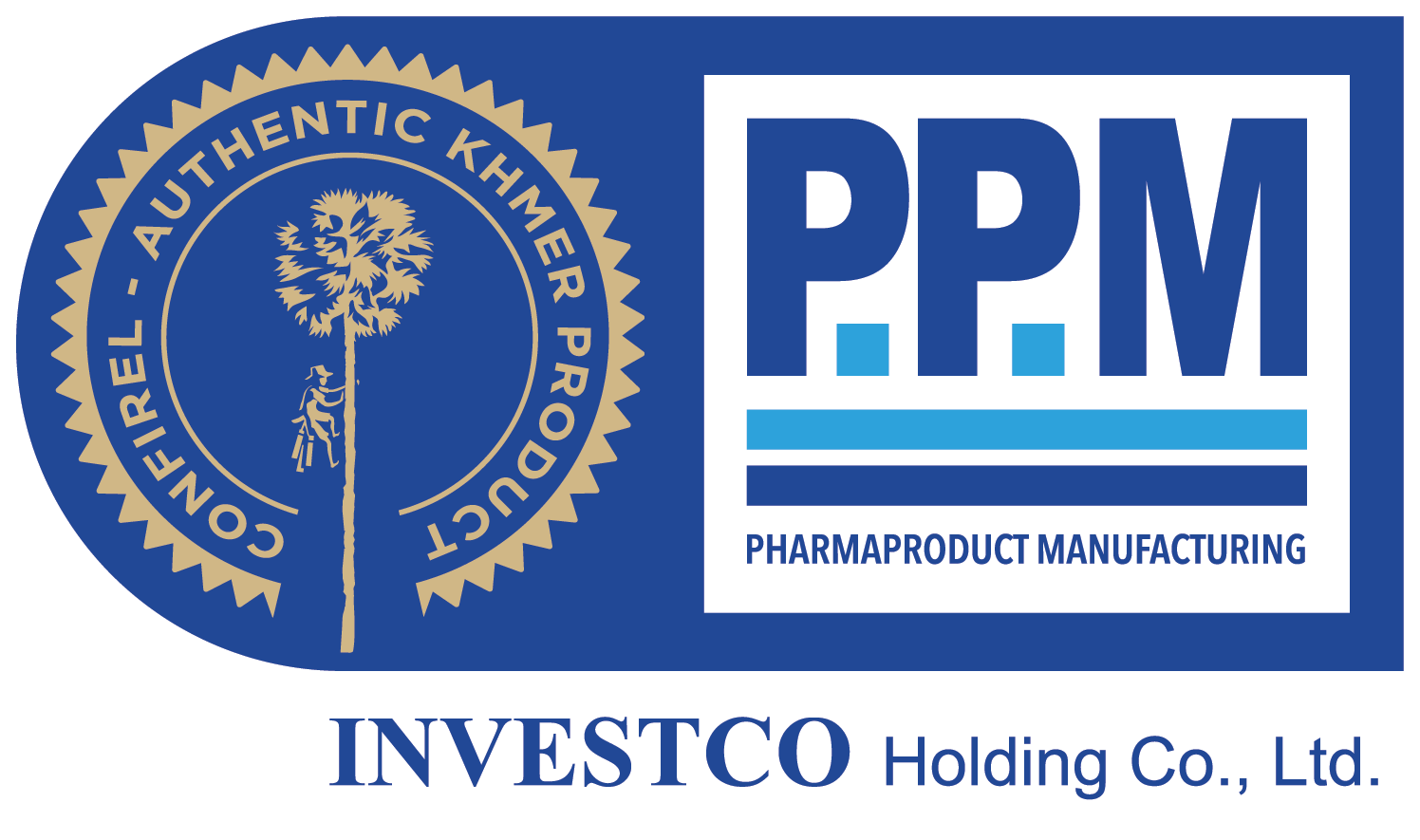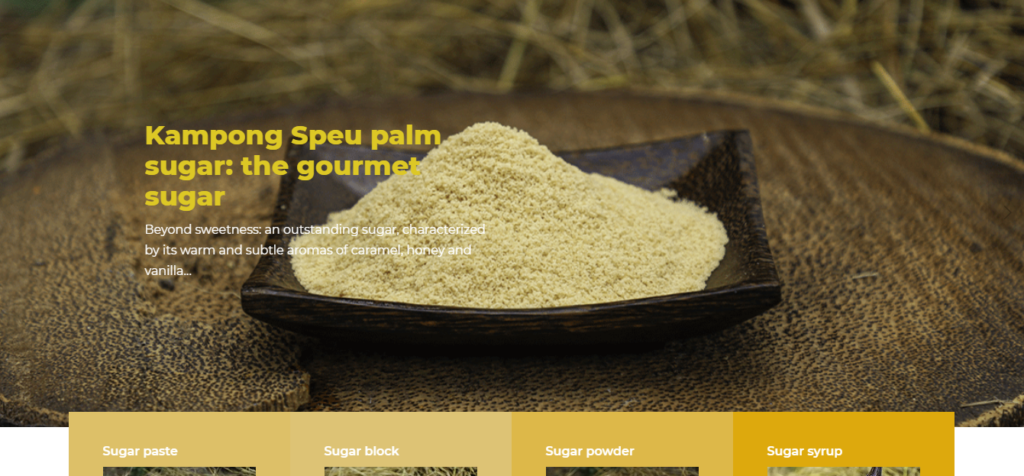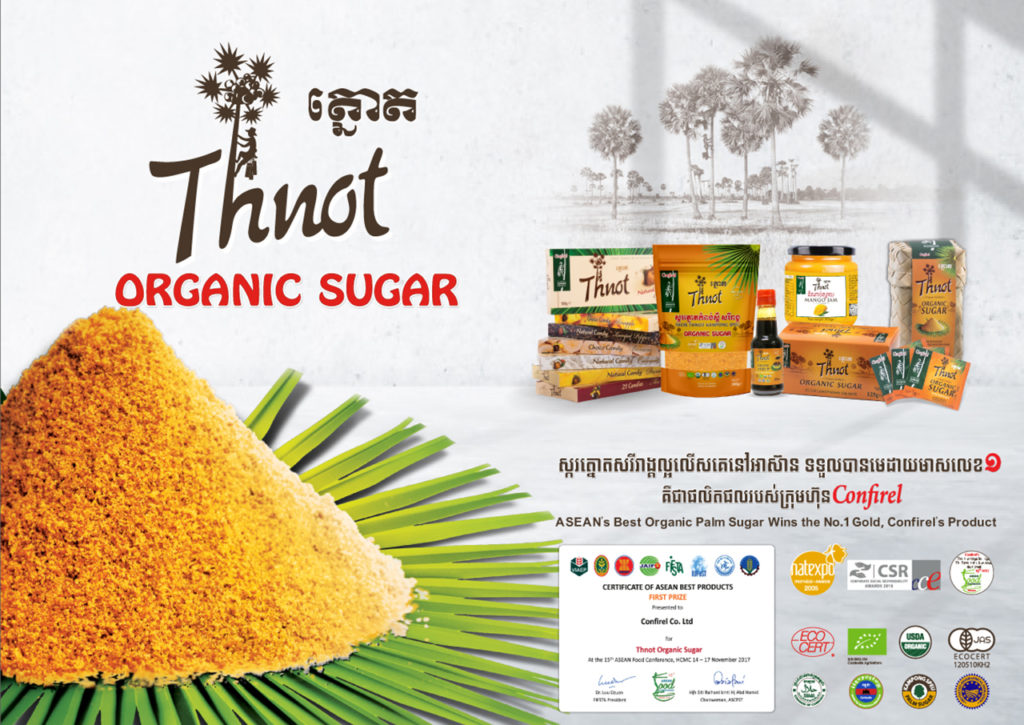


Boost for the promotion of PGI Kampong Speu Palm Sugar
Publish date: 07 July 2021 / Food
Since mid-June, the site www.kampongspeupalmsugar.org was launched. This site was developed by the Kampong Speu Palm Sugar Promotion Association (KSPA) with the support of the “Regional Project for the Promotion and Recognition of Geographical Indications in Cambodia, Laos and Myanmar”, funded by the Agence Française de Développement (AFD) and whose implementation has been entrusted to a consortium comprising GRET, ARTE-FACT Development & Agri-Food Consulting, CIRAD, IRAM, REDD and Certipaq, in partnership with the Departments of the Intellectual Property of the three countries.
This 3.5-year program started in 2020 takes over from other actions in favor of PGIs supported in the region by AFD since 2005. These notably resulted, in Cambodia, in obtaining, in 2010, from this precious sesame on the local and international market for Kampot pepper and palm sugar from Kampong Speu, flagship products in Confirel’s catalog.
Confirel is also behind the initiation of procedures to obtain the PGI for palm sugar from Kampong Speu. The field work of our teams combined with research carried out in France had indeed made it possible to demonstrate that the Kampong Speu terroir was especially favorable to obtaining organic palm sugar with exceptional properties. Confirmation will be made in 2005 when our product obtains the Palme d’Or at the Natexpo show in the “Eat well” category.
For Kampong Speu palm sugar, an objective of the project supported by AFD is to increase the production and sale volumes of IGP sugar to improve the standard of living of rural producers. But also, this should make it possible to increase the resources of the Kampong Speu Palm Sugar Promotion Association (KSPA) so that it can best fulfill its mission as manager of the IGP. In particular, KSPA must ensure that all producers and distributors respect the IGP specifications, that product traceability is ensured from the palm tree to the end consumer. It must also have all the required checks carried out by an approved certification body.

“The area covered by the IGP is quite large and, even if the young people do not always take over, there remains a large reservoir of producers not yet in the IGP to achieve a significant increase in volumes”, explains Jean-Marie Brun, head of Arte-Fact Development and regional coordinator of the project. The IGP recruitment campaign demonstrated this, since it resulted in the almost doubling of KSPA member producers, from 80 to 150.
Develop the volume of sales has yet to be done, in particular by promoting the product. The new website is one part of the system, as is the support that the Project will be able to provide to economic players in the sector, for example during events at points of sale, at their initiative.
While the Kampong Speu palm sugar PGI figures prominently in the Project’s intervention, other Cambodian PGIs, registered or in the pipeline, are also being supported.
“For the Kampot Pepper IGP, we plan to work with the Association on updating certain points of the specifications to integrate the recent innovations made by economic players on the processing of pepper (such as preserved green pepper with Kampot fleur de sel). We also plan to work in complementarity with the DIP and the World Intellectual Property Organization on the preparation of a possible IGP on Kampot/Kep salt. And in recent months, we have also provided our technical support to the association of honey producers from Mondulkiri, which has just obtained its registration as a Cambodian PGI ”, explains Jean-Marie Brun.
Outside Cambodia, the project works mainly on Khao Kai Noi rice in Laos (in Xiengkhouang and Huaphan provinces) and plans to add support to Komaen tea (in Phongsaly province). In Burma, work is underway with the actors of the Paw San rice sector in the Shwe Bo region to finalize the specifications and develop the capacities of their association to manage the PGI in the future.




